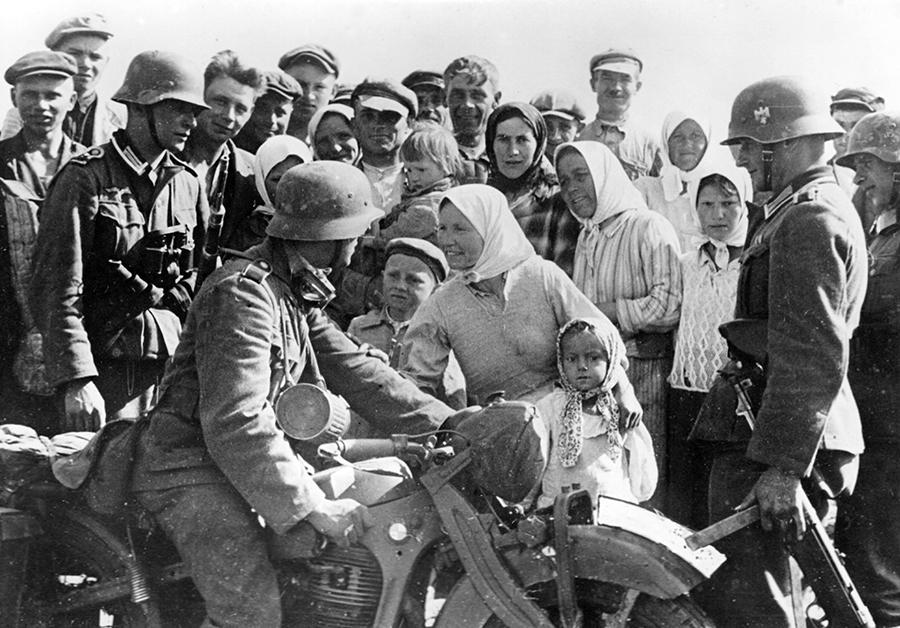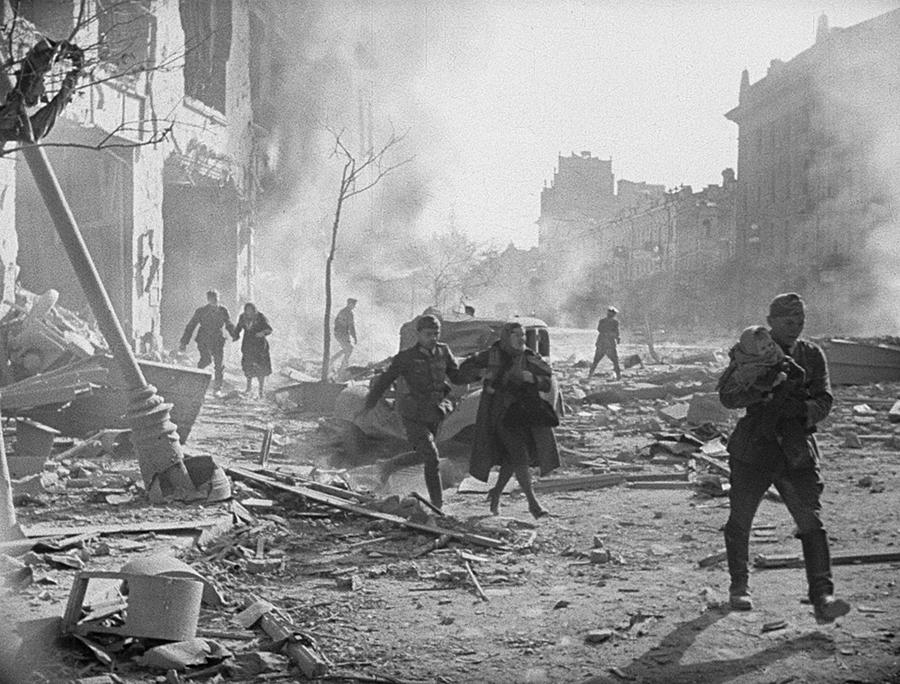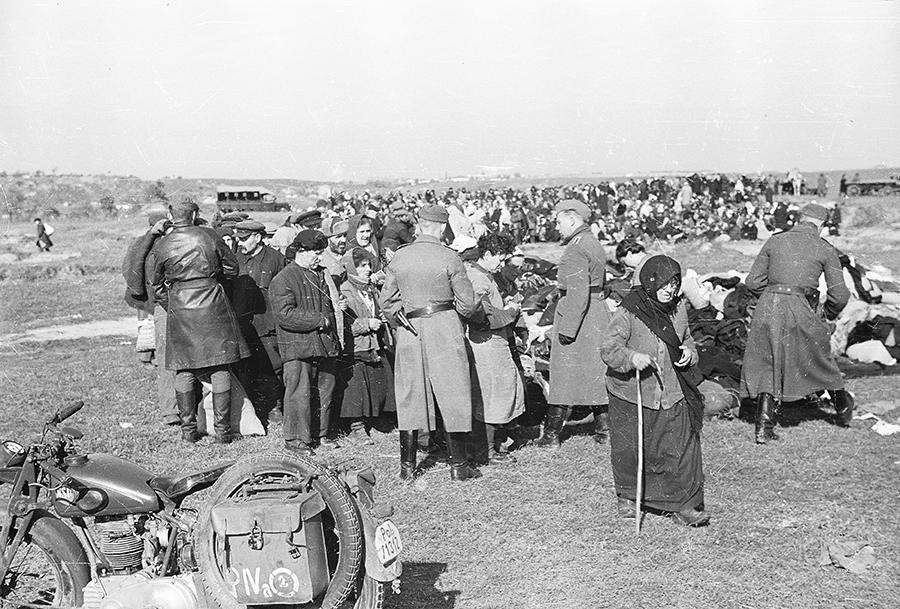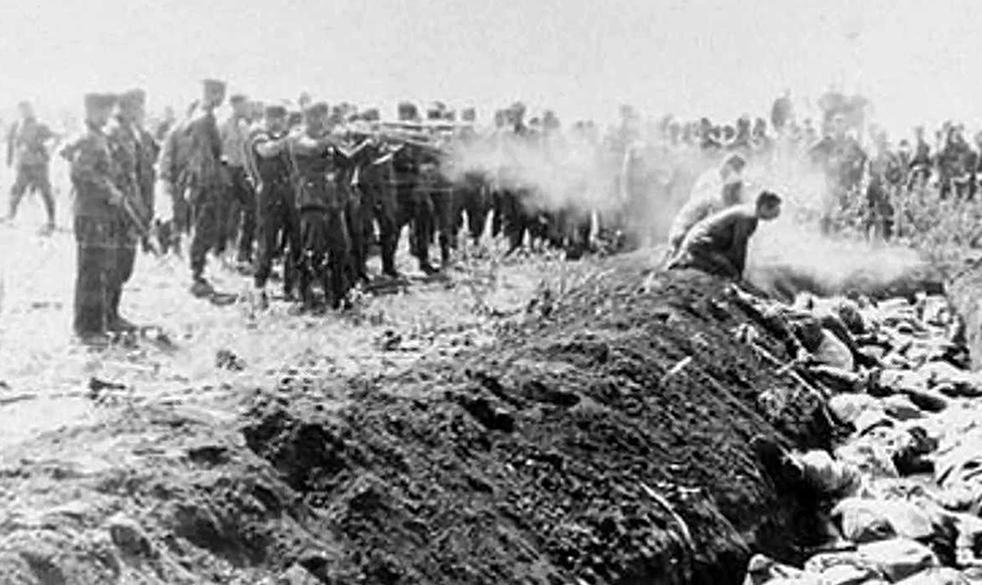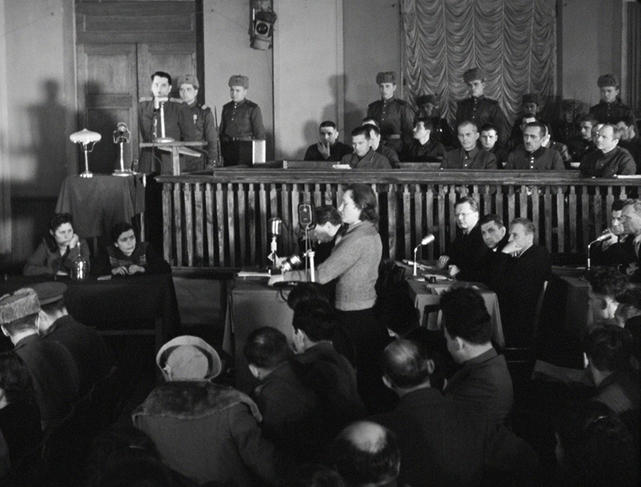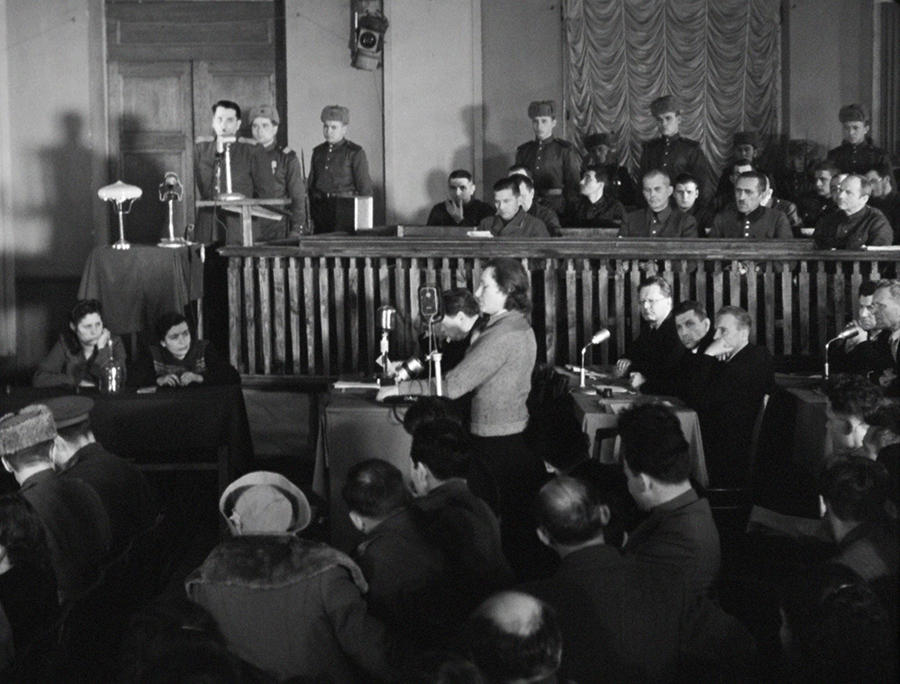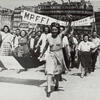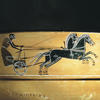You are here
Babi Yar, 1941: An exceptional account of the massacre of Jews in Kyiv
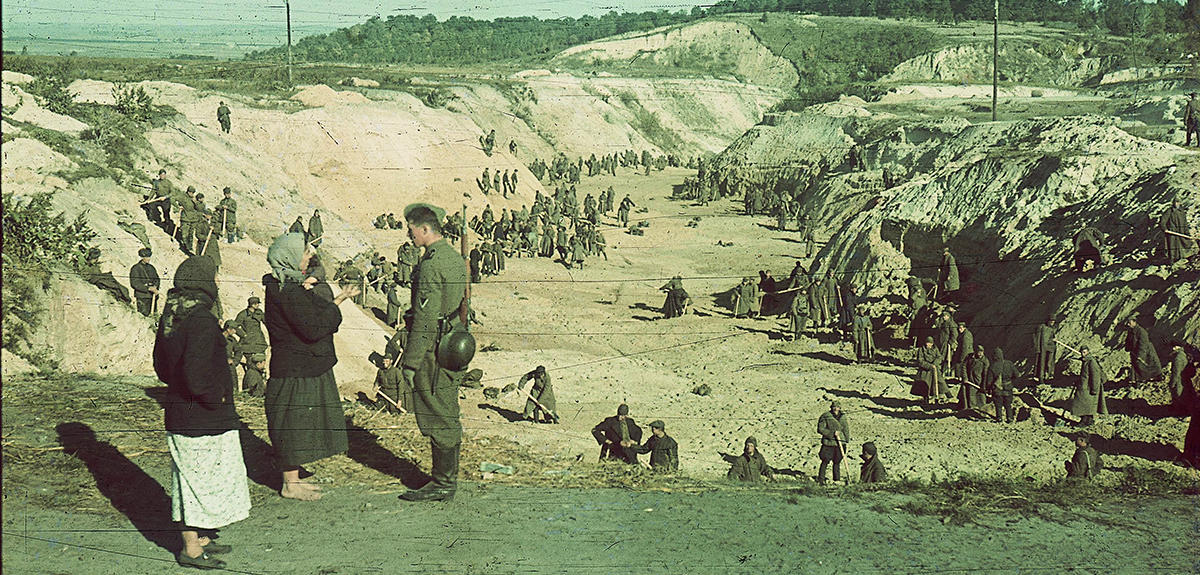
On 28 September, 1941, the Jews in Kyiv and its suburbs received an order to report the next day to the nearby locality of Babi Yar, bringing with them only a few items of clothing, their identity documents, money and other valuables. Those who failed to comply would be punished by death. Assuming that they were going to be deported to forced labour camps, they obeyed. However, they were then led in small groups to the edge of a ravine, where 33,771 Jewish men, women and children, including the elderly, were all executed by gunshot within 36 hours, assassinated by members of the SS, the Wehrmacht and the Ukrainian Auxiliary Police. When Stalin regained control over Ukraine after the war, the Soviets covered up the specifically anti-Semitic nature of the killing, claiming that it targeted “peaceful Soviet citizens”. In 1952 they filled in the ravine.
The documentary by the Ukrainian filmmaker Sergueï Loznitsa recreates the context of the Babi Yar massacre, which was carried out three months after Nazi Germany began attacking the USSR in June 1941. When the Wehrmacht marched on Kyiv, then a Soviet city, the Ukrainians had long been prey to various neighbouring imperialist powers…
Christian Ingrao:1 That’s right. There were nationalist movements in Ukraine at the time, like the Ukrainian Nationalist Organisation (UNO), founded in 1929. These groups were originally formed to gain independence for the country and resist the pressure of Poland, which was trying to make its territories more Polish. Later the resistance focused on the Soviet Union, after it annexed western Ukraine in 1939. The population endured an invasion, followed immediately by collectivisation. From then on, the Ukrainians fought fiercely against the occupiers, all the more so because they knew only too well how the USSR was treating eastern Ukraine. As part of the Soviet Union since 1919, that region had already suffered from the collectivisation of farmland, which led to the famine of 1932-1933, claiming 3.5 million lives.
Does this explain the enthusiastic reception that the Nazis received in Ukraine in June 1941?
C. I.: It explains first of all that the Ukrainians mostly hated the Soviet government, and hoped that the Germans would grant them independence. It should also be emphasised that the Ukrainian nationalist movements cultivated a close ideological affinity with Nazism, sharing its anti-communist sentiments and atavistic anti-Semitism. They were happy to see the arrival of the Germans, and took advantage of the disruption of Stalinian power to foment rebellions and pogroms against the Jews. But when the Wehrmacht entered Kyiv, the German authorities’ intention was not to proceed immediately with the elimination of the Jews. Although the Einsatzgruppen did target them – along with snipers, saboteurs, communists, etc. – it was primarily because they were considered a security threat.
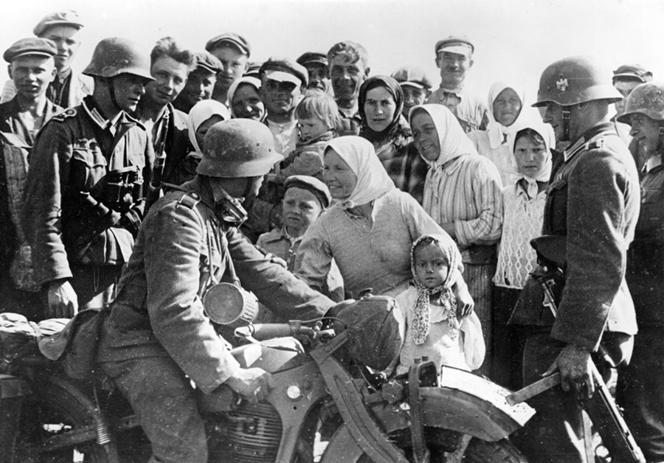
So what led to Babi Yar?
C. I.: In August 1941, the Nazis considered that the ‘Final solution to the Jewish question’ required the deportation of all European Jews to the north of the Soviet Union, above the Arctic Circle. In order to accommodate those in transit from Western and Central Europe, the Nazi logisticians decided that they first needed to ‘make room’ by exterminating the Soviet Jewish population. Starting at the end of summer, the Einsatzgruppen began to shoot the Jewish women and children they happened to come across. But the Babi Yar massacre itself was triggered by a series of deadly explosions on 24 September. Demolition and sabotage squads left behind by the Red Army had planted mines in the streets of central Kyiv. Two Wehrmacht headquarters were heavily damaged, as shown in the documentary by exceptional images that I had never seen before. The Nazis immediately blamed these attacks on the city’s Jewish population and decided that they all, men and women, must be exterminated immediately. The desire for vengeance and reprisal hastened the exhaustive extermination that was already under way, resulting in the Babi Yar slaughter.

Was the entire Jewish population of Kyiv massacred?
C. I.: Yes – specifically the 33,771 Jews still in Kyiv at the time, considering that before the war, in 1937, they numbered 224,000. In the meantime, the Soviets had evacuated as many of them as possible, being aware of the German operations for the massive, systematic extermination of Soviet Jews. The implementation of the massacre, which is thoroughly documented, involved the coordination of a wide variety of personnel. The Wehrmacht’s propaganda units organised the roundup of the Jews on 29 and 30 September, while the Einsatzgruppen were in charge of surveillance and the firing squads . Infantry groups and pioneer units then collapsed the sides of the ravine to cover up the bodies.
Why has Babi Yar, the slaughter of the Ukrainian Jews, become the symbol of Jewish genocide in Eastern Europe, where a million and a half Jews were killed between 1941 and 1943?
C. I.: Babi Yar has become a symbol because of its inaugural character and its scope: keep in mind that the entire Jewish community of the third largest Soviet city was massacred in an operation that lasted only two days. Other killings would follow, but none so deadly and appalling. For the Nazis, Babi Yar can be considered a kind of test, a trial run for massive and exhaustive extermination by firing squads. At the time, the command in charge of the killings planned to generalise the method everywhere they wanted to eliminate Jews. But barely a month after Babi Yar, dispatches from the Einsatzgruppen reported that mass shootings were not efficient enough: when their personnel returned to the scene, they always found survivors.
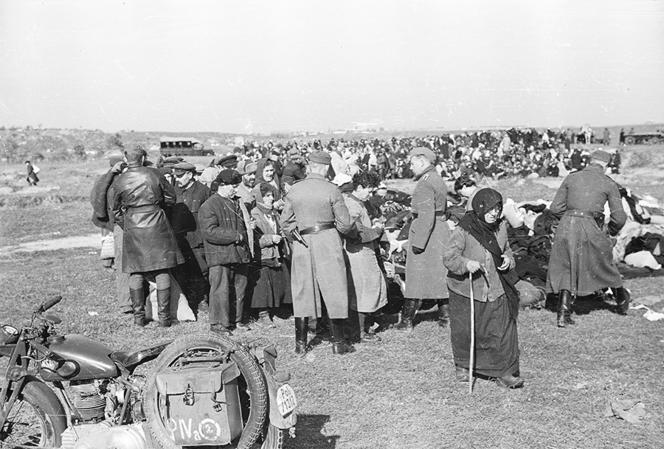
Today’s Russian propaganda keeps emphasising Ukraine’s Nazi past in an effort to justify the invasion of the country that started last February. Does this context change your perception of Loznitsa’s film, produced before the invasion?
C. I.: The documentary takes a thoughtful, balanced position. It’s a Ukrainian saying to Ukrainians: ‘We must confront our past’. The problem is to see this critical and progressivist approach now being perniciously distorted by the Russian regime. Some in Ukraine have criticised the film, contending that its narrative plays into Moscow’s hands. But in fact, the filmmaker Sergueï Loznitsa has expressed full and unambiguous support to his country in every statement he has made since the invasion, whereas his Ukrainian critics uphold an anti-Russian point of view characterised by the very Ukrainian nationalism whose dark side is revealed in the film. The filmmaker also takes the opposite stance to the Soviet narrative – his work shows that the Jews were not killed as Soviet citizens, but rather because they were Jewish. (The film’s storyline clearly demonstrates the Soviet determination to revise the perception of this crime, presenting the various modifications of the site up until 1960, whether due to landslides or Soviet operations to fill in the ravine using material from a nearby landfill.)
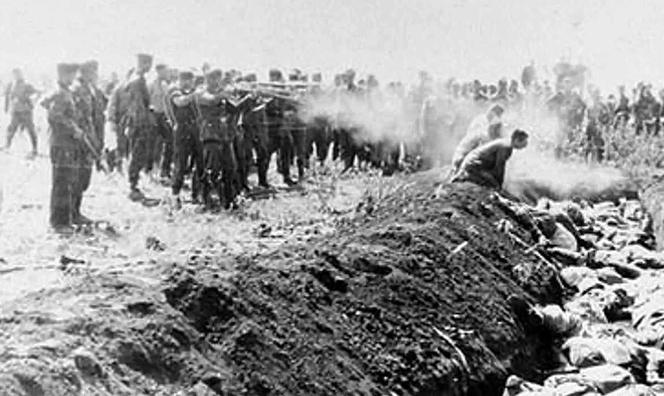
Has the documentary been criticised for anything else?
C. I.: Yes – for focusing only on the Jews who died at Babi Yar, even though as many as 100,000 people were killed there between 1941 and 1943, including Soviet prisoners of war and Roma, as well as 400 nationalist activists. But I don’t subscribe to this point of view. Loznitsa could be accused of glossing over certain points, but his standpoint is fundamentally opposed to the outdated Stalinian narrative that subsumes all the victims under a single category. His documentary highlights the singular fate of Kyiv’s Jews. It offers an exceptional and much-needed history lesson, considering that the Ukrainian collective memory remained, until quite recently, at best incomplete: of the three memorial projects proposed since 2000, none has come to fruition, for reasons that have become quite complex, in a context of potential attempts at instrumentalisation.
The film takes a rather radical approach for a documentary, with no interviews or voice-over commentary. What impression did it make on you?
C. I.: I have a vivid memory of it since I had the opportunity to watch it at the scene of the massacre, in the ravine of Babi Yar, during the 80th anniversary commemoration in October 2021. I also value the film for its rigour and scientific worth: the narrative is very precise, and backed by an extraordinary, unique documentary research effort. I appreciate Loznitsa’s strict avoidance of emotional overstatement, by not using extremely violent images that could overwhelm the viewer. Such images do exist though – those of the abuses committed during the pogroms in Ukraine are truly bloodcurdling. By choosing not to include them in the film, Loznitsa allows each viewer to form their own opinion. The absence of commentary, replaced by simple title cards indicating the geography and chronology of the events, enhances this judicious approach.
How did this dark episode of history come within the scope of your research?
C. I.: I initially set out to study the intellectuals who enlisted as SS officers and became directors of the agencies of oppression (the Gestapo, Security Service, Einsatzgruppen). I found out that some of them were present at Babi Yar and were involved in the mass killing. As you know, the goal of historical research today is to determine the sequence of events, since the facts themselves, the Nazi atrocities, have already been clearly established: we can virtually trace a day-by-day account of the massacres that were committed. So now it’s more about understanding the mindset behind certain decisions, like that made over three days in October 1941 to close the Minsk ghetto, in Belarus, and shoot all of its inhabitants. The archives that were opened after the fall of the Berlin Wall, eyewitness testimonies and judicial sources have enabled enormous progress in this area over the past 25 years. But some key questions remain. For example, we still don’t have a clear perception of how the Third Reich’s various agencies of oppression coordinated their relations with the concentration camp administrations. Most of the sources from that period are lost forever: 90% of them were destroyed by Allied bombing or by the Nazis themselves.
To find out more: The documentary Babi Yar. Context, directed by Sergueï Loznitsa, was released in French cinemas in September this year. It won the Golden Eye Special Jury Prize at the 2021 Cannes Festival.
- 1. Christian Ingrao is a historian specialising in Nazi abuses and a CNRS research professor at the CESPRA centre for sociology and politics (CNRS / EHESS).



